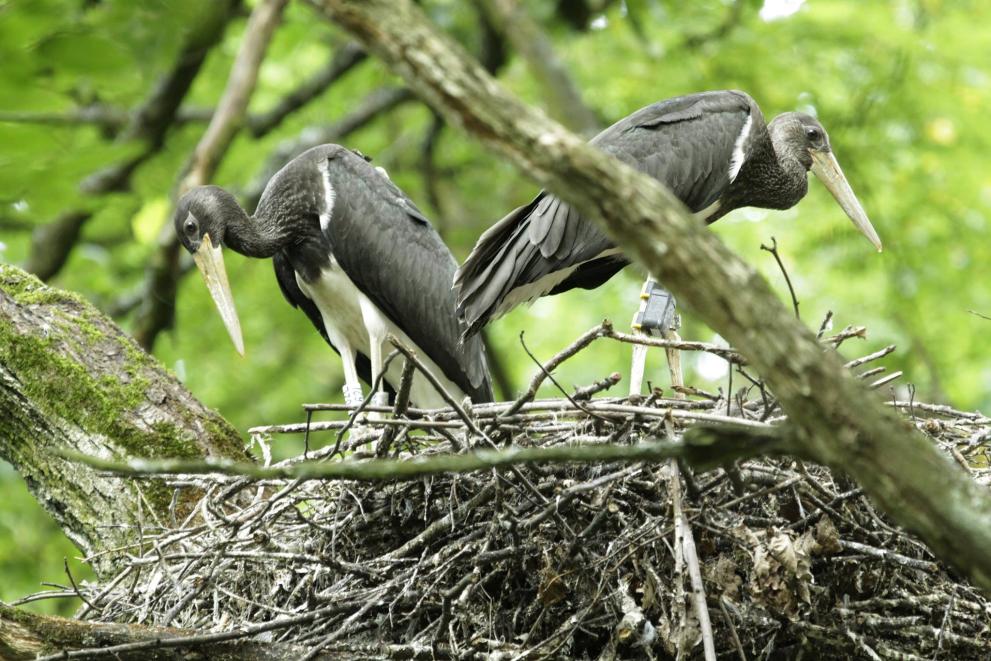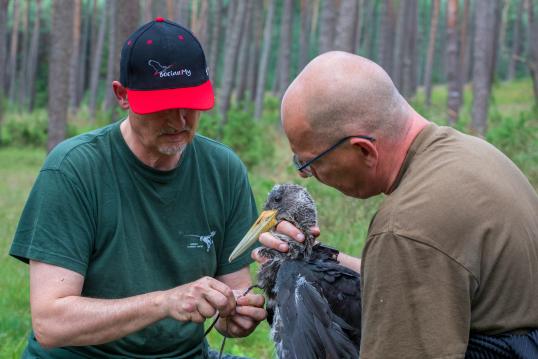
About the finalist
| Lead applicants | SGGW Leśny Zakład Doświadczalny w Rogowie |
| Category | Conservation on land |
| Countries involved | Poland |
| Main Natura 2000 sites | Numerous sites in Poland including Puszcza Piska, Puszcza Notecka, Bory Tucholskie, Puszcza Knyszyńska and Puszcza Białowieska |
| Website | https://cepl.sggw.edu.pl/bocianimy/ |
Overview
The black stork is a long-distance migratory bird that requires old, undisturbed and open forests for breeding. In the early phase of nesting, the species is particularly sensitive to disturbances and landscape changes, such as those caused by inappropriate forestry activities.
The Forest Experimental Station in Rogów, and the Committee for the Protection of Eagles, with support from the Polish Operational Programme Infrastructure and Environment, have implemented an impressive series of actions, aimed at improving the protection of the black stork and its habitats in 16 Natura 2000 sites across Poland, as well as strengthening its resistance to threats linked to climate change.
By 2023, the project had protected as many as 600-700 breeding sites, supporting 55% of the national breeding population, through the designation by the Regional Forestry Directorate of nest protection zones (each of around 2,800 hectares). Forest management practices and human disturbance are restricted in these zones during the breeding season. This figure represents an increase of more than 500 sites compared to the 193 sites protected in 2015, when only 16% of the national breeding sites were protected. In Natura 2000 sites, the protected zones around nesting sites cover a cumulative area of more than 600,000 hectares.
The project also invested resources in repairing nests, protecting nests from predators with repellents or protective bands, as well as in assessing and monitoring the stork population. For the first time in Poland, many details of the spatial ecology of young black storks were discovered thanks to the use of GPS-GSM loggers, including information about movements within breeding sites, migration dates, migration routes, and location of stopover and wintering areas. As a result, the black stork is now one of the most intensively monitored species in Poland.
Due to the typical ‘forest nature’ of the black stork, appropriate education and dissemination activities were also carried out targeting stakeholders connected with Natura 2000 forest areas. In addition, the black stork internet forum (ciconianigra.sk) and the Facebook page BocianiMy (StorkMy) were used to achieve a wider activation of other social groups such as young people, teachers and bird lovers.
Pictures from the finalist
Videos from the finalist:
https://www.youtube.com/watch?v=XcO_4CDe43E
Details
- Publication date
- 14 March 2024
- Author
- Directorate-General for Environment





